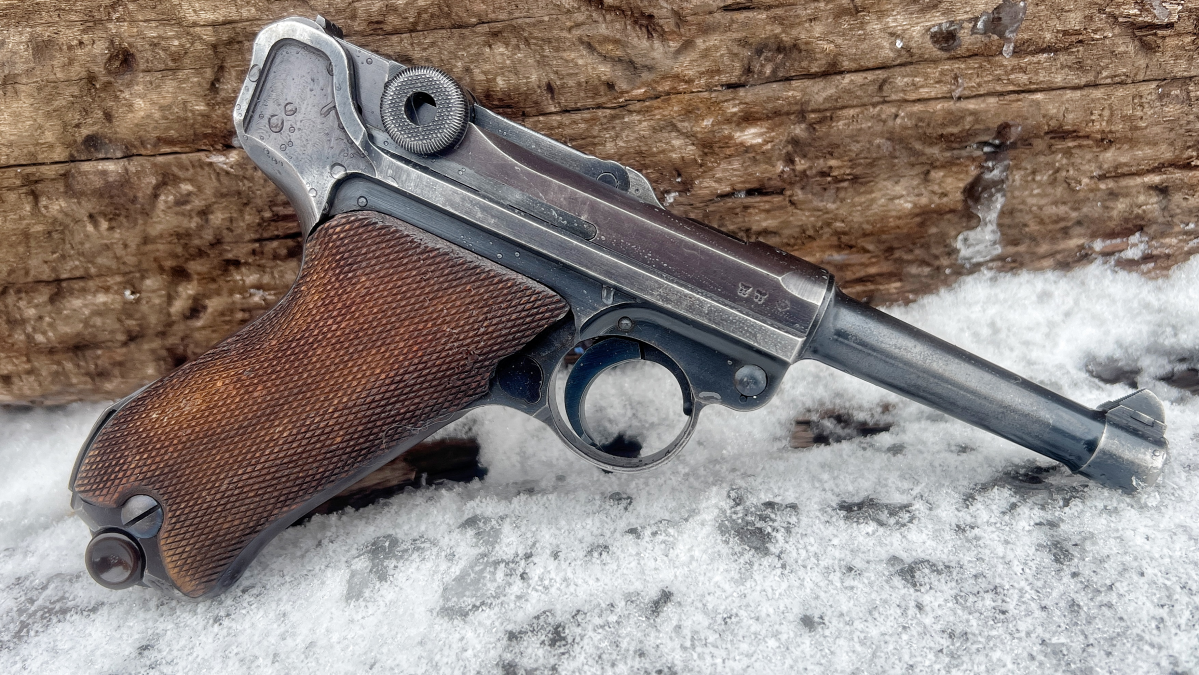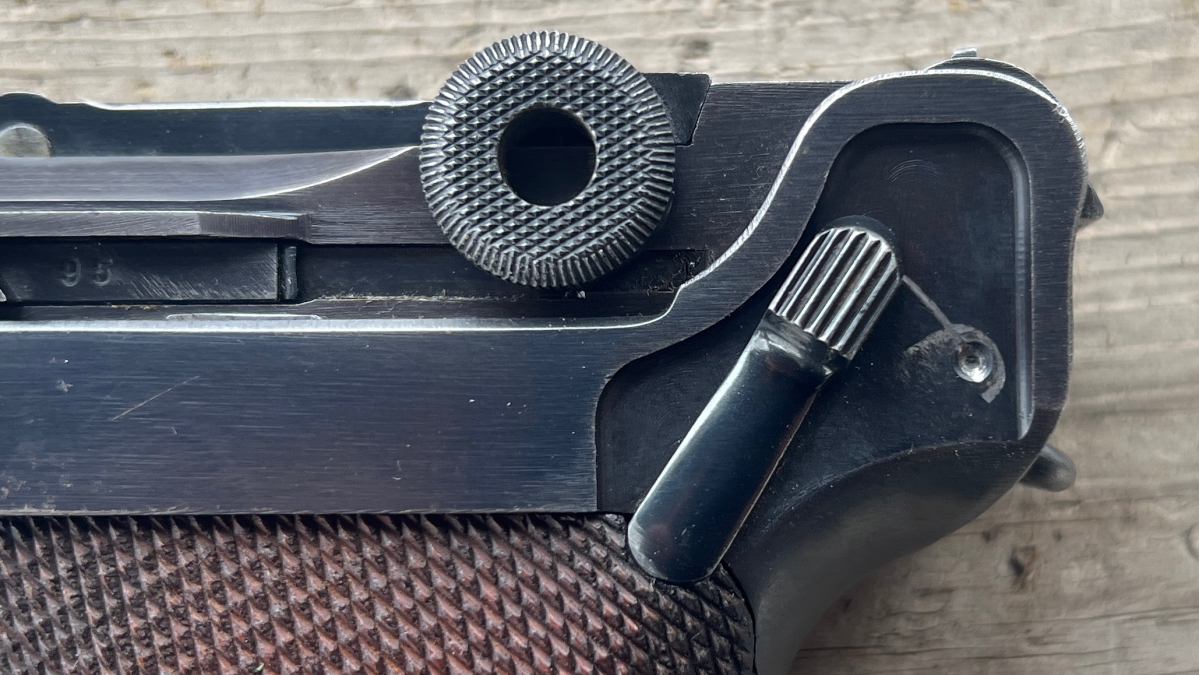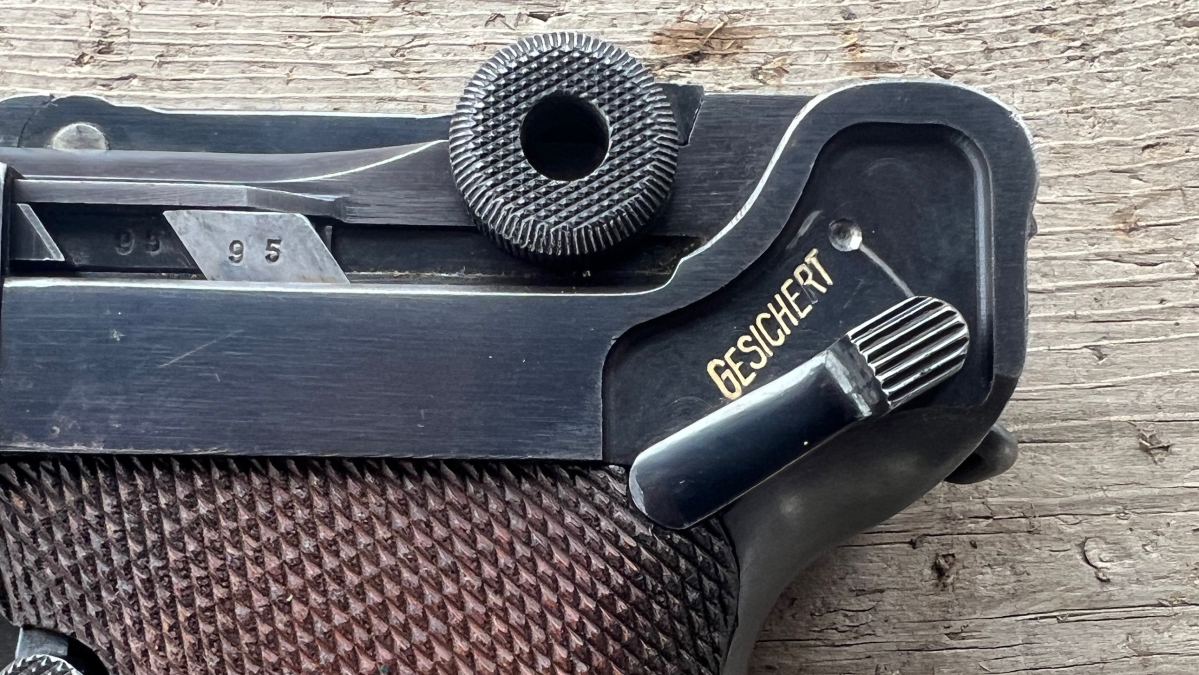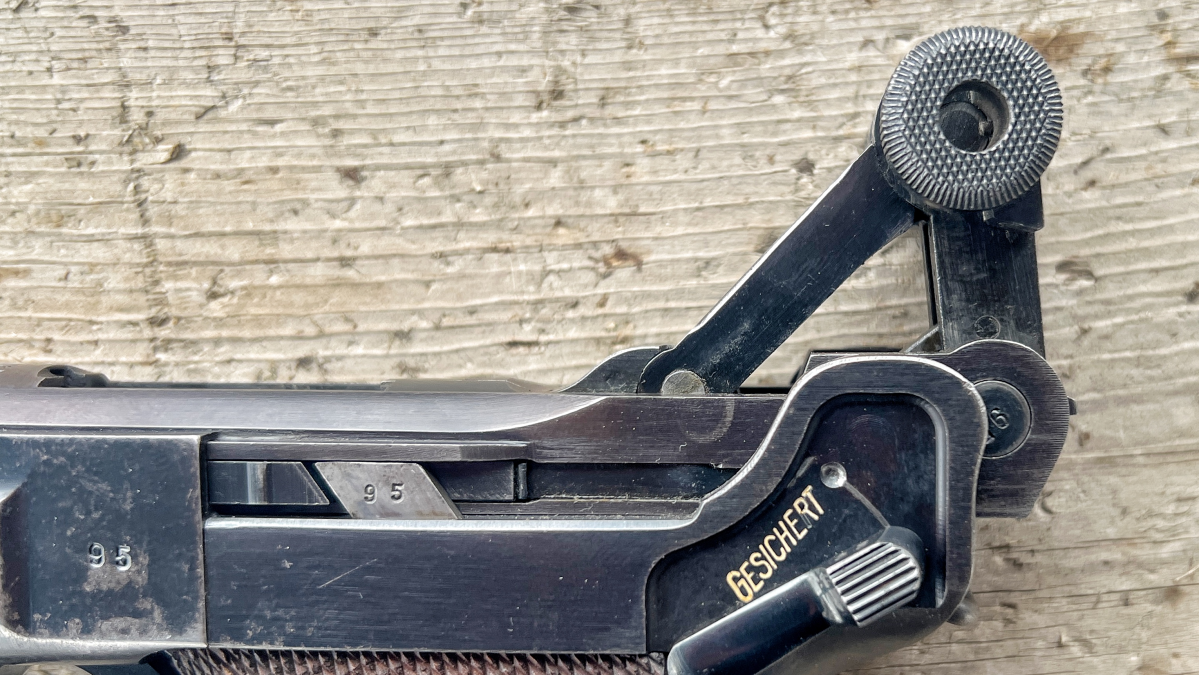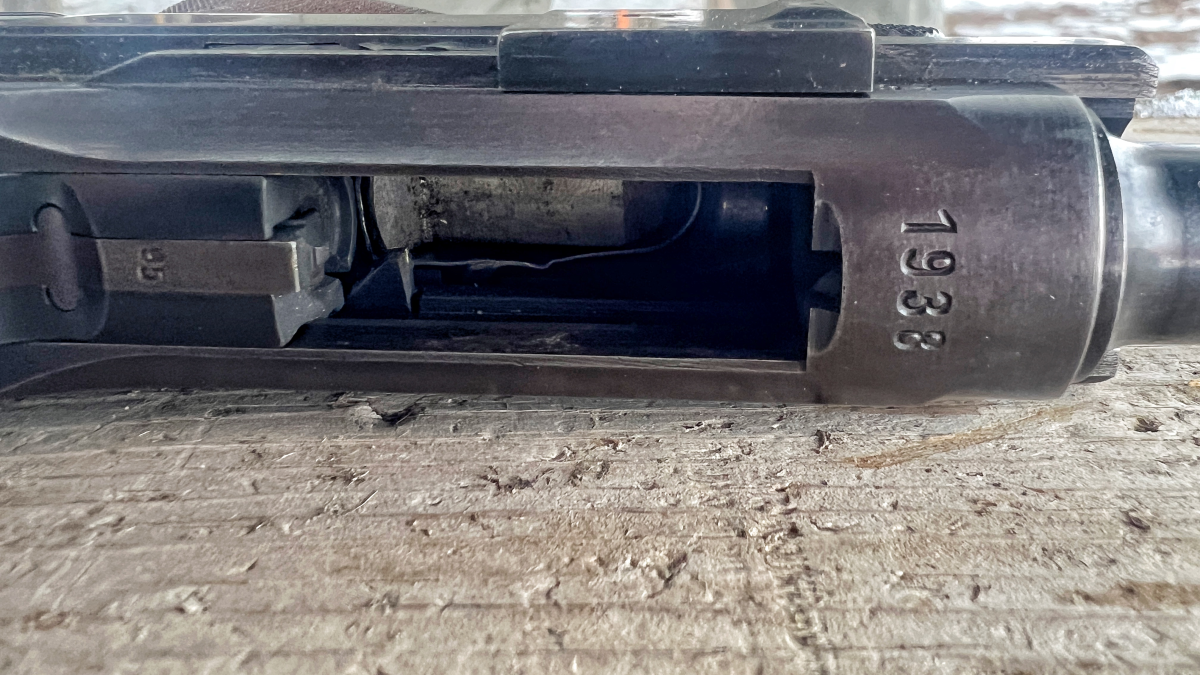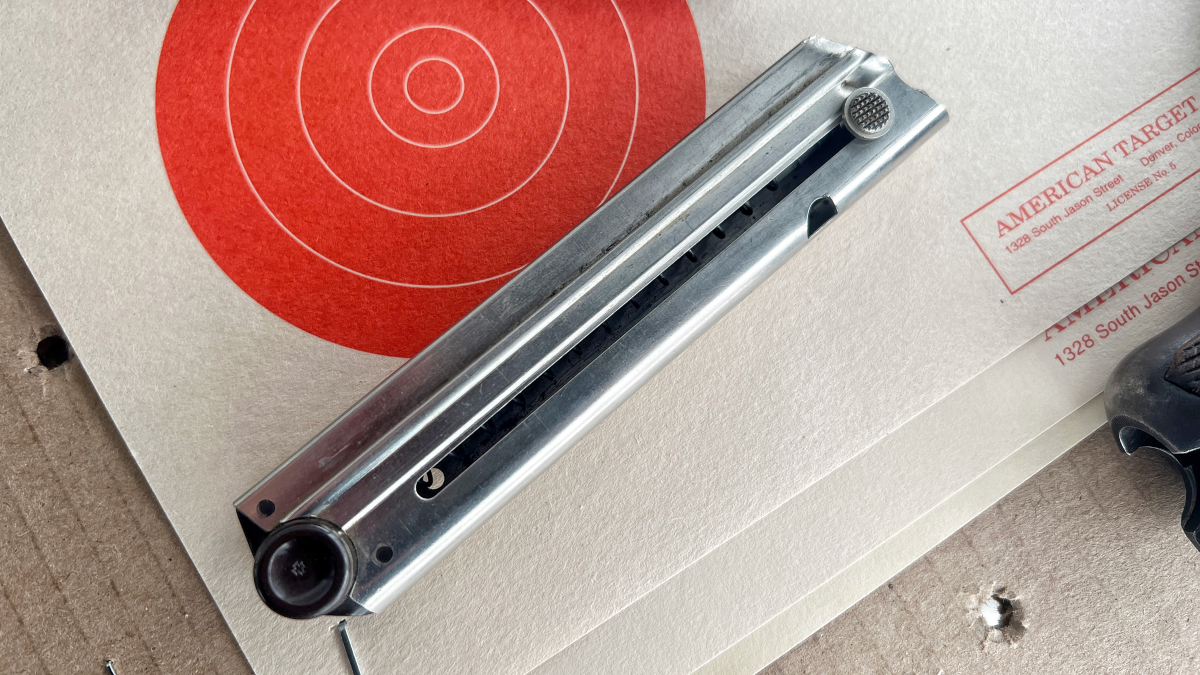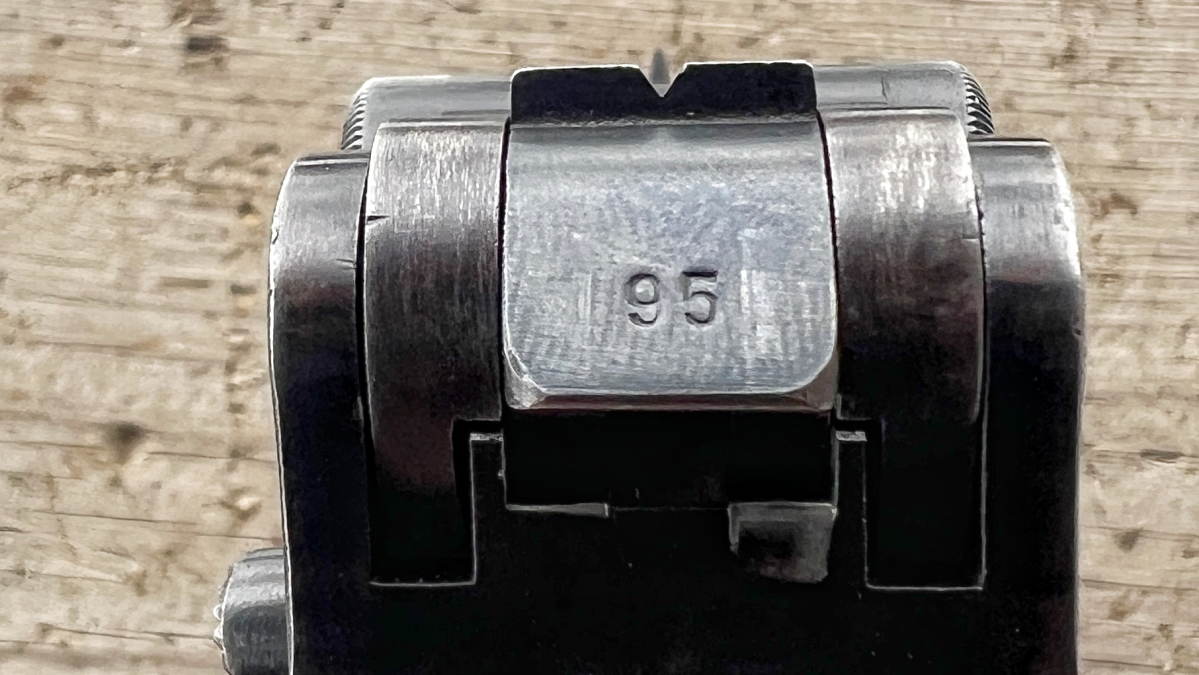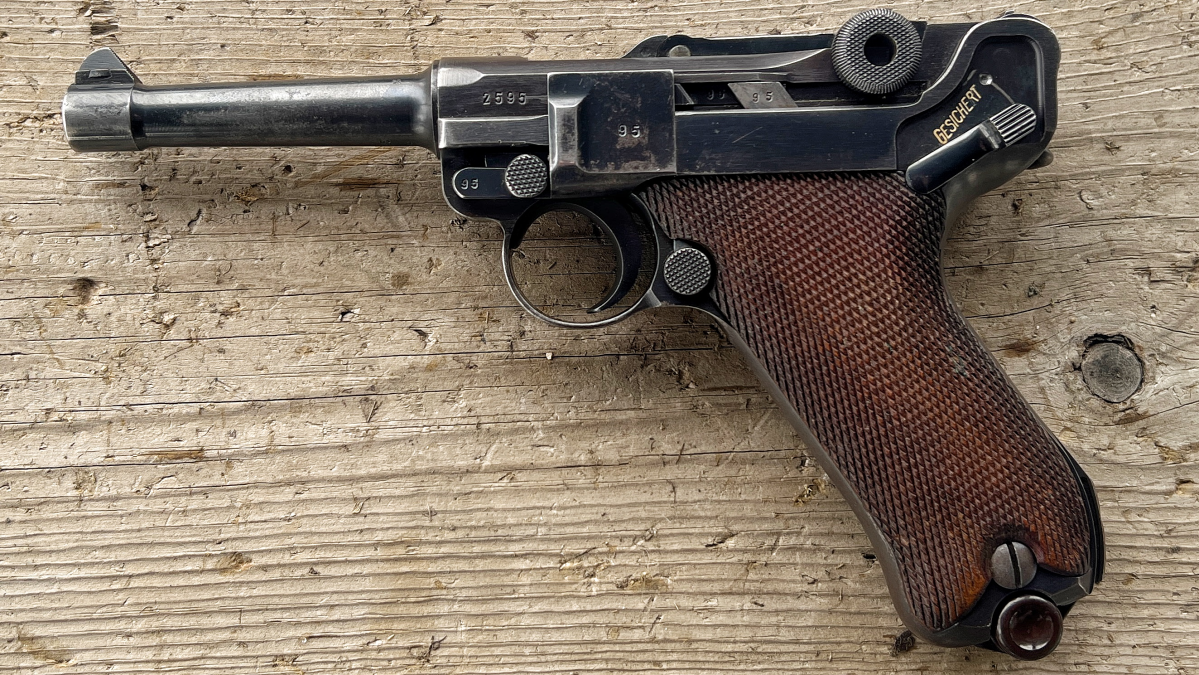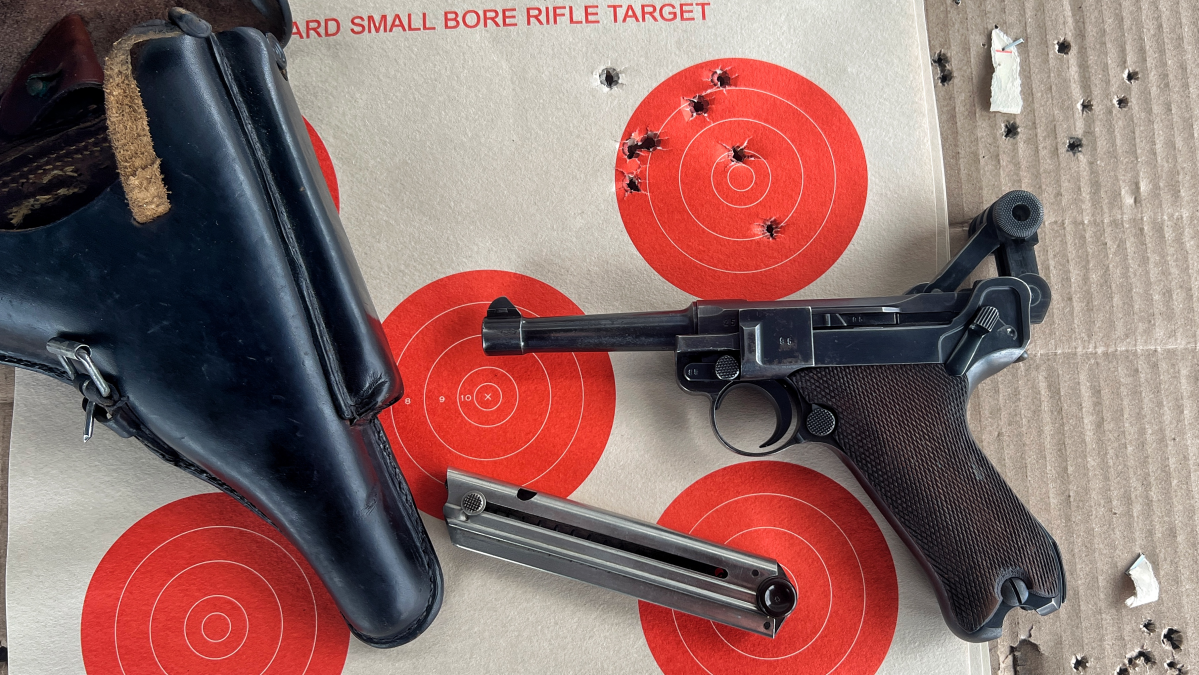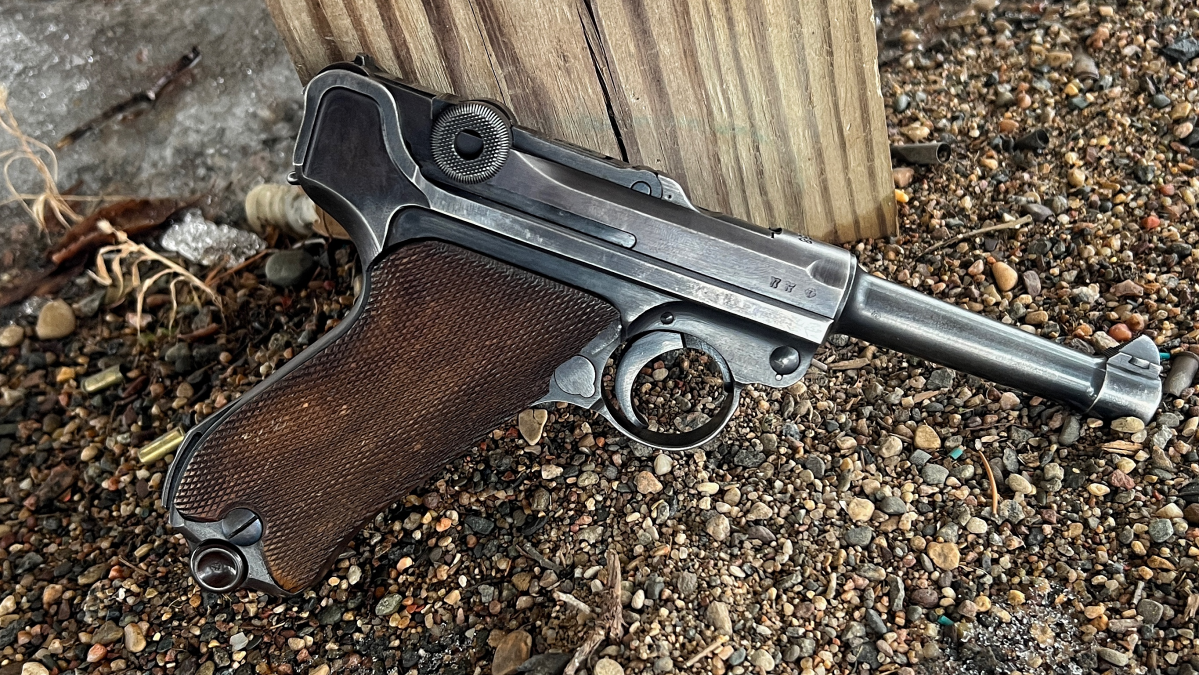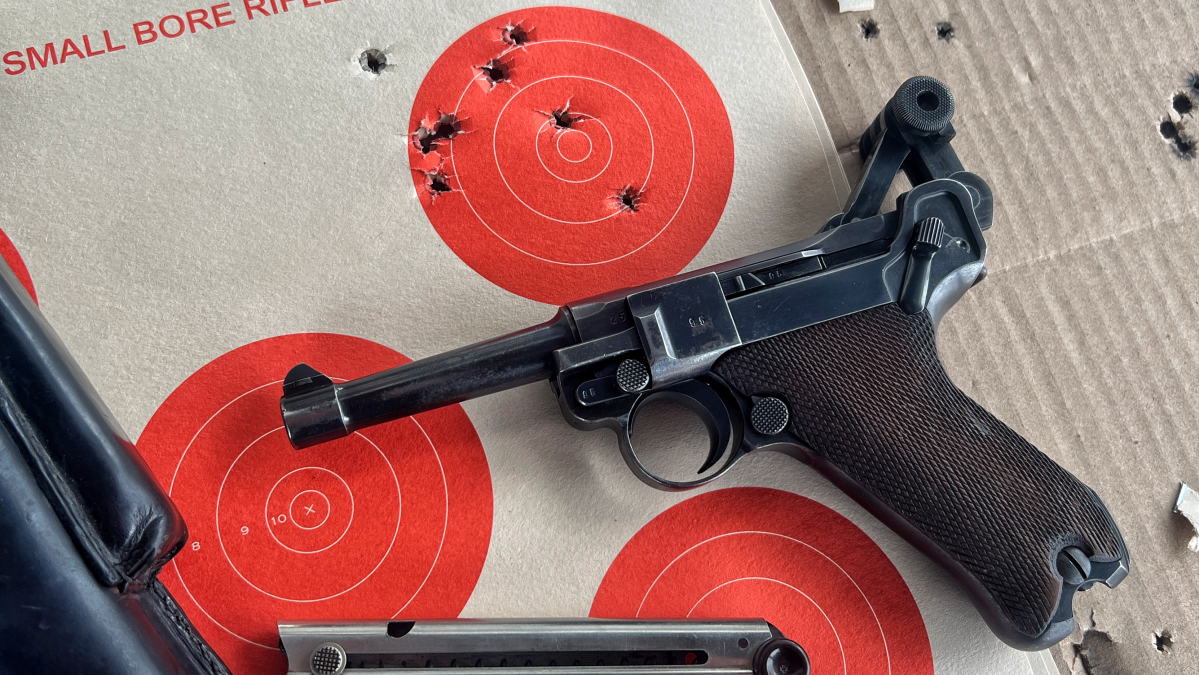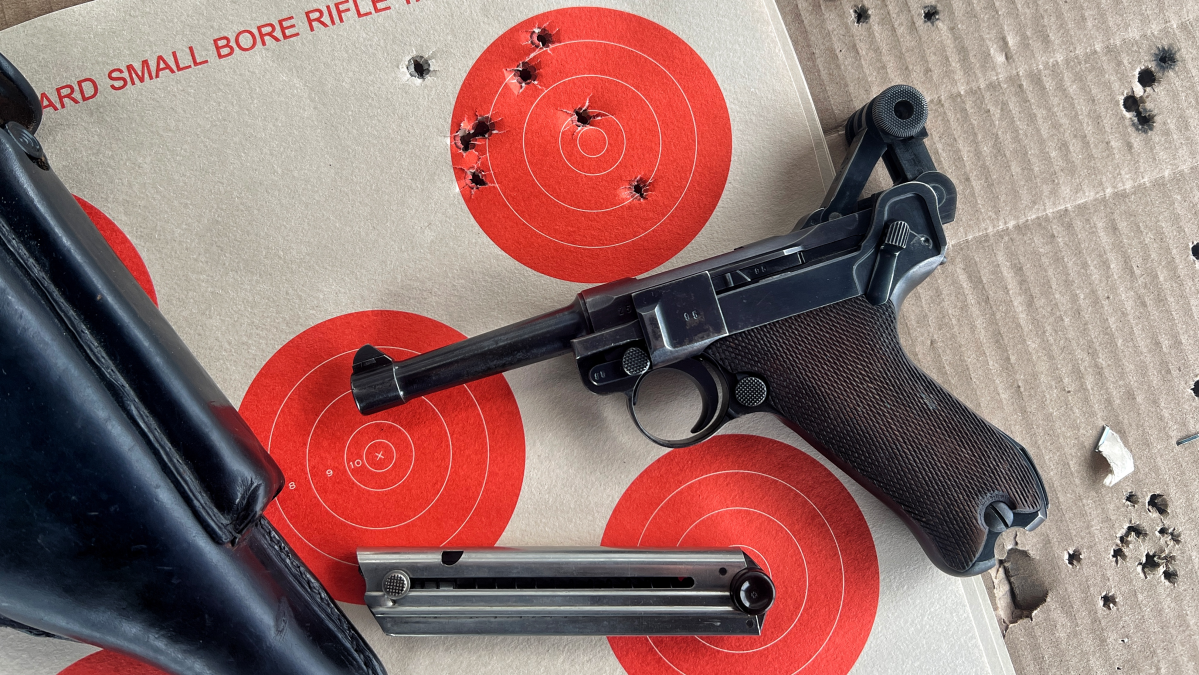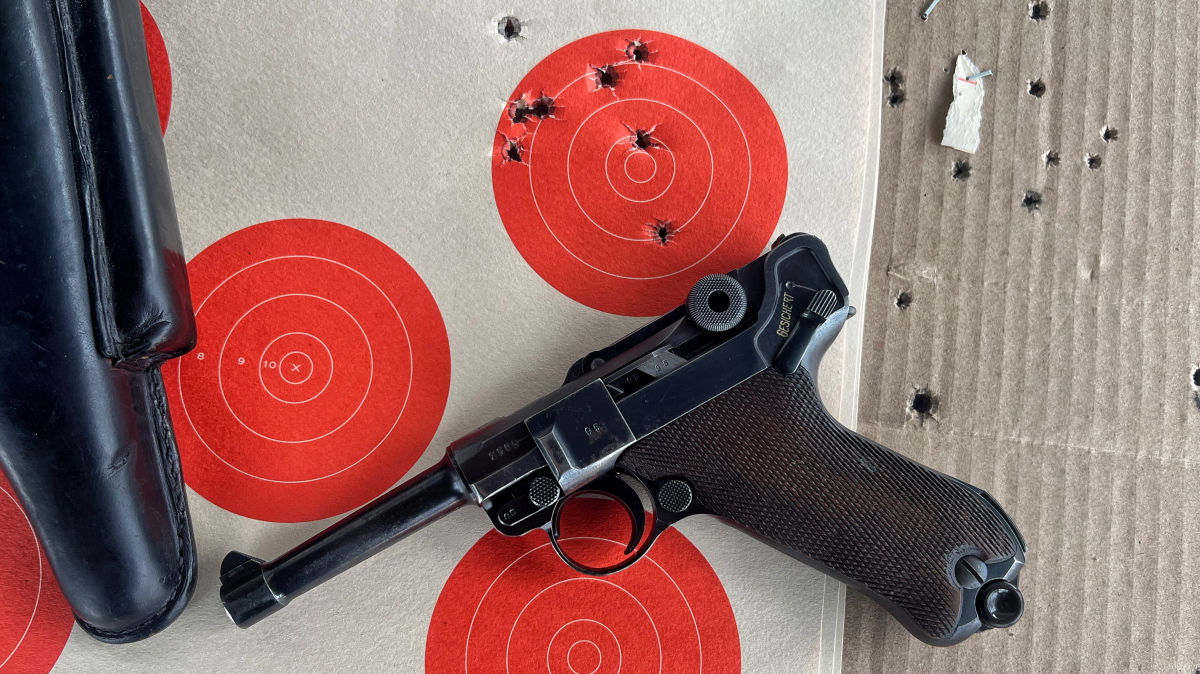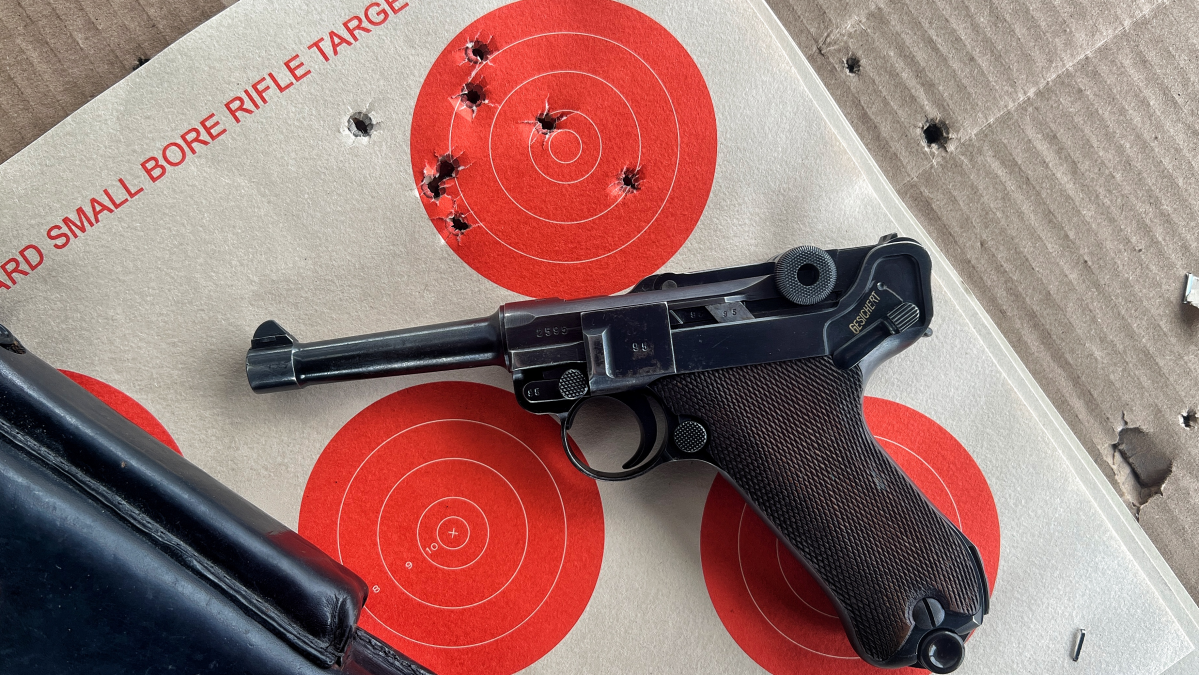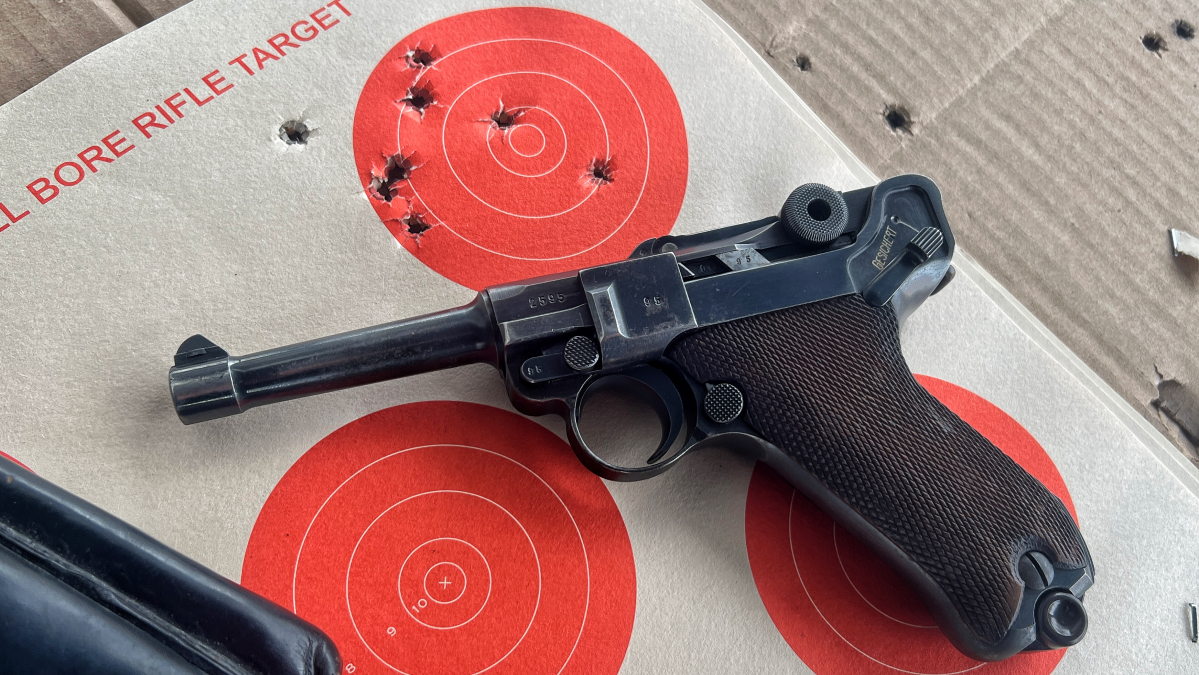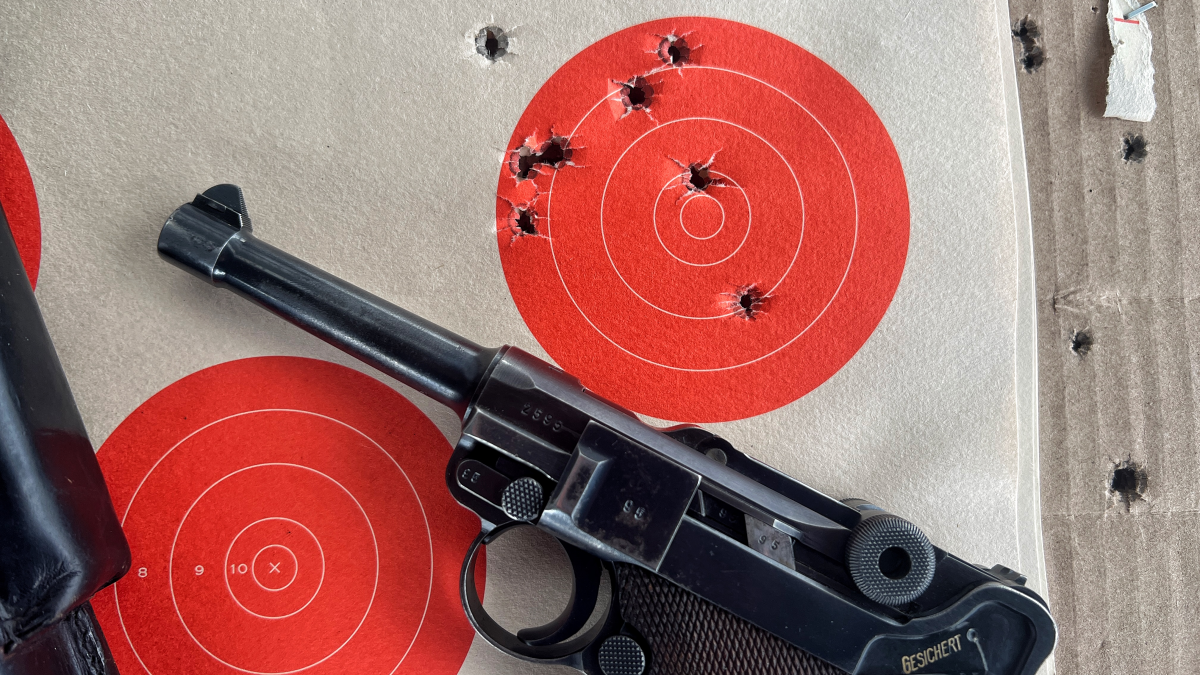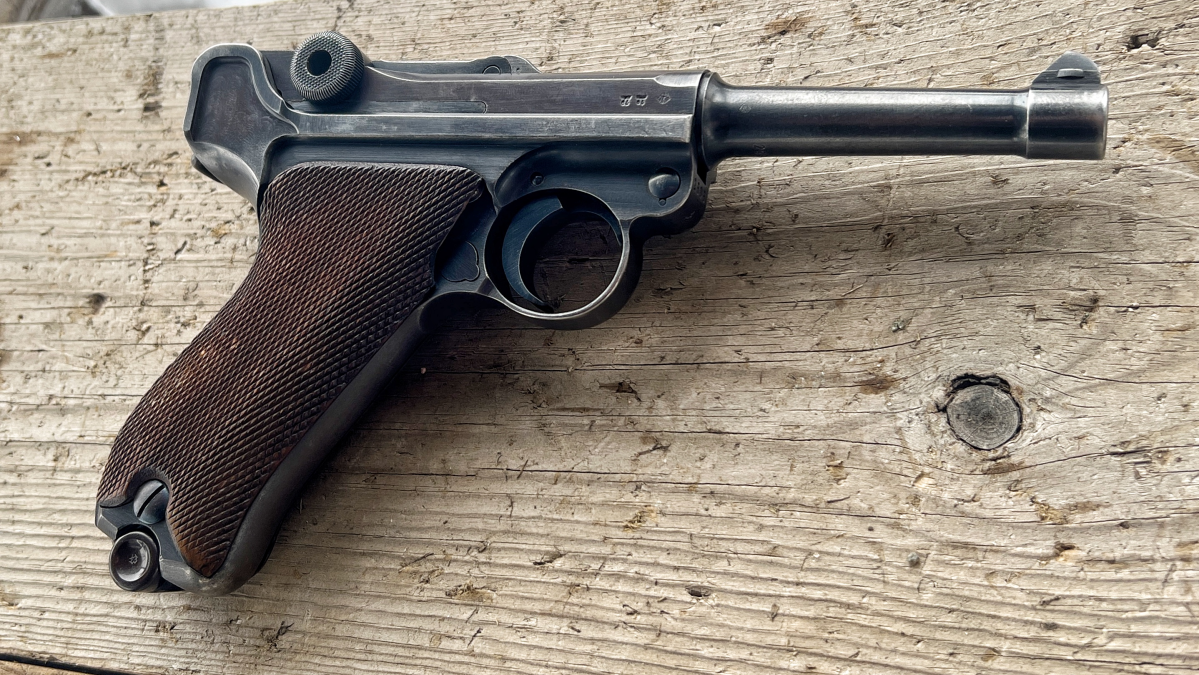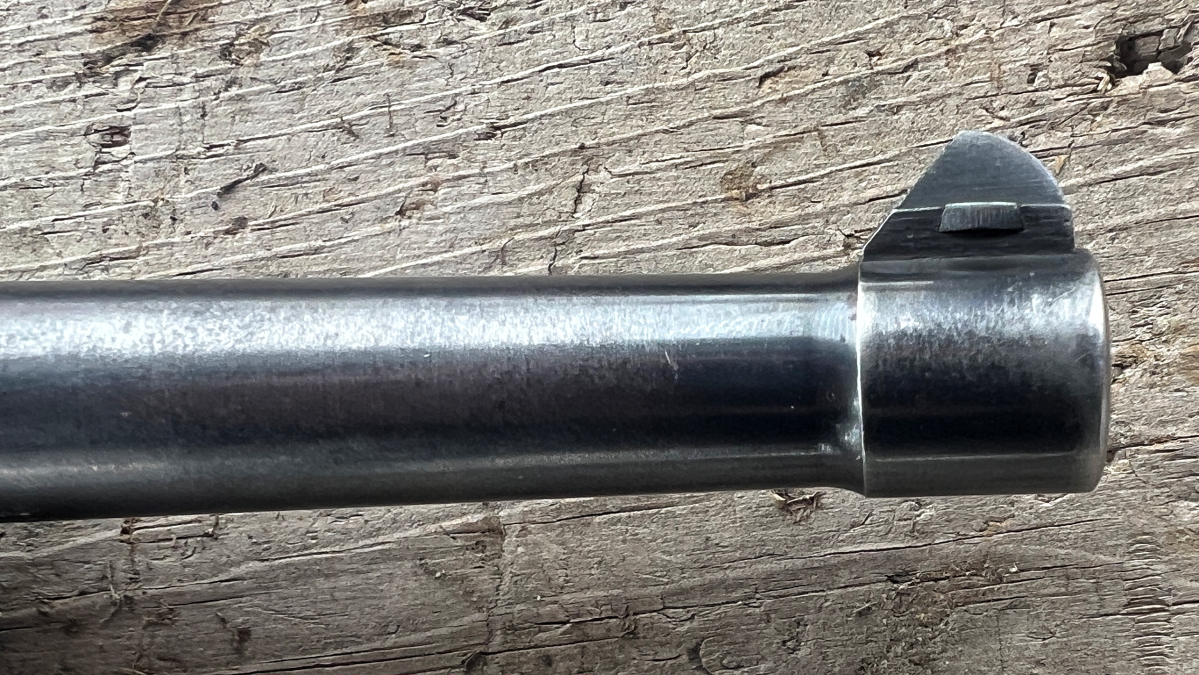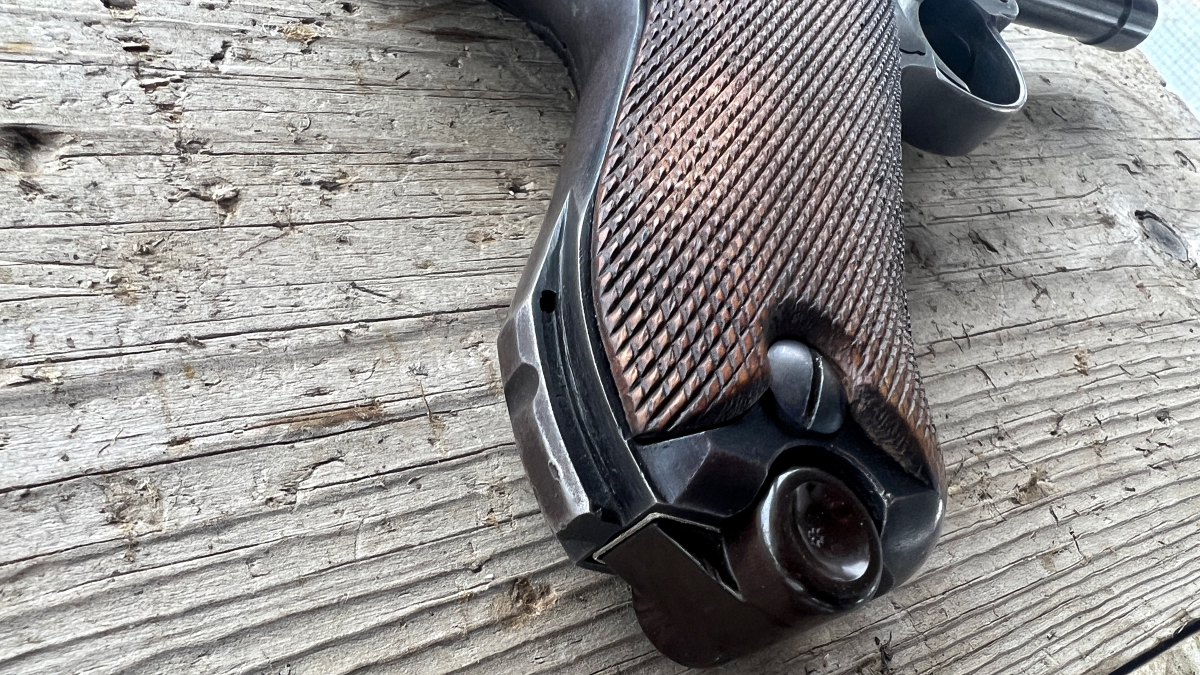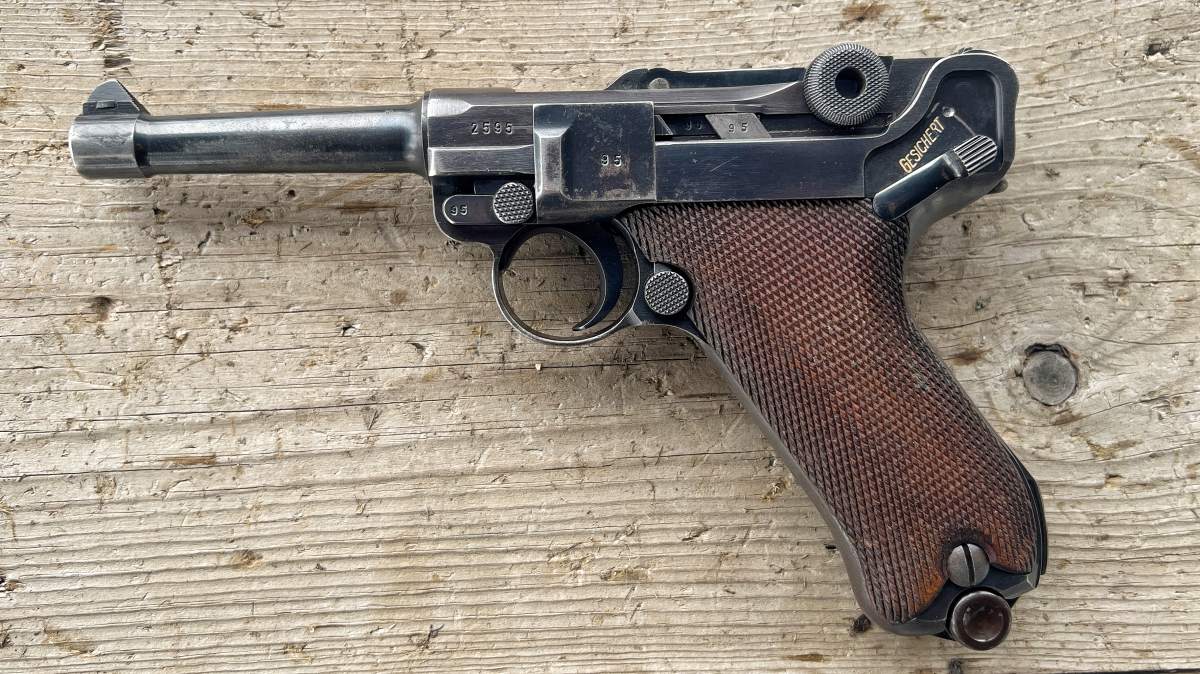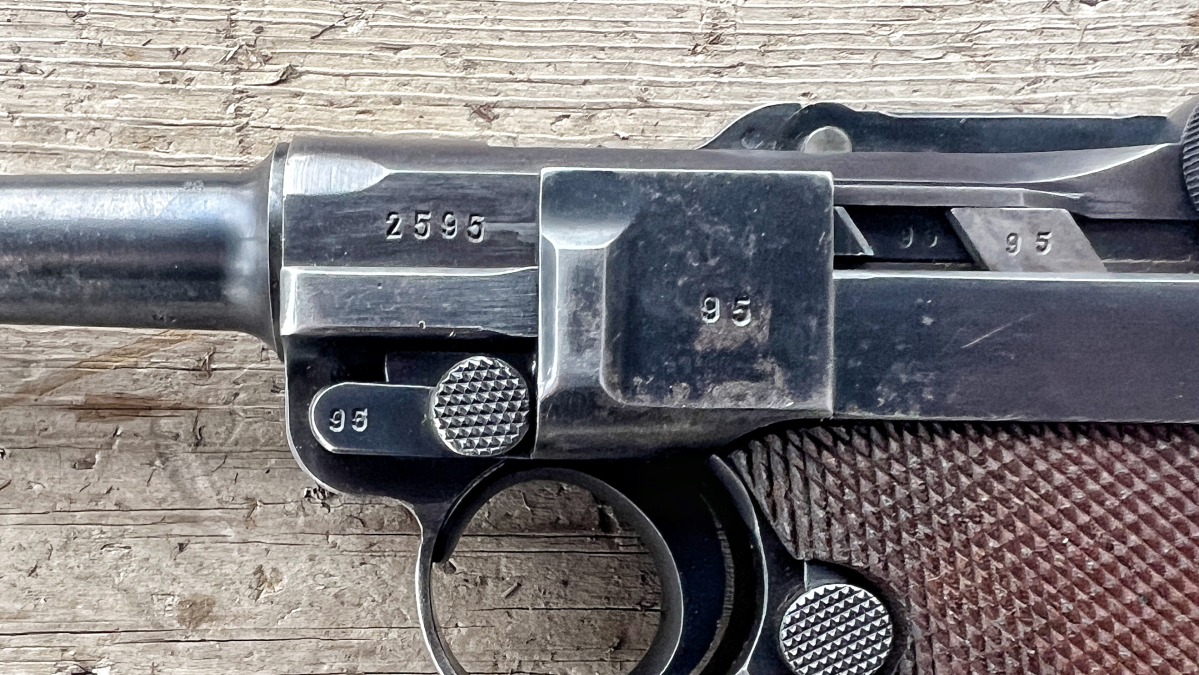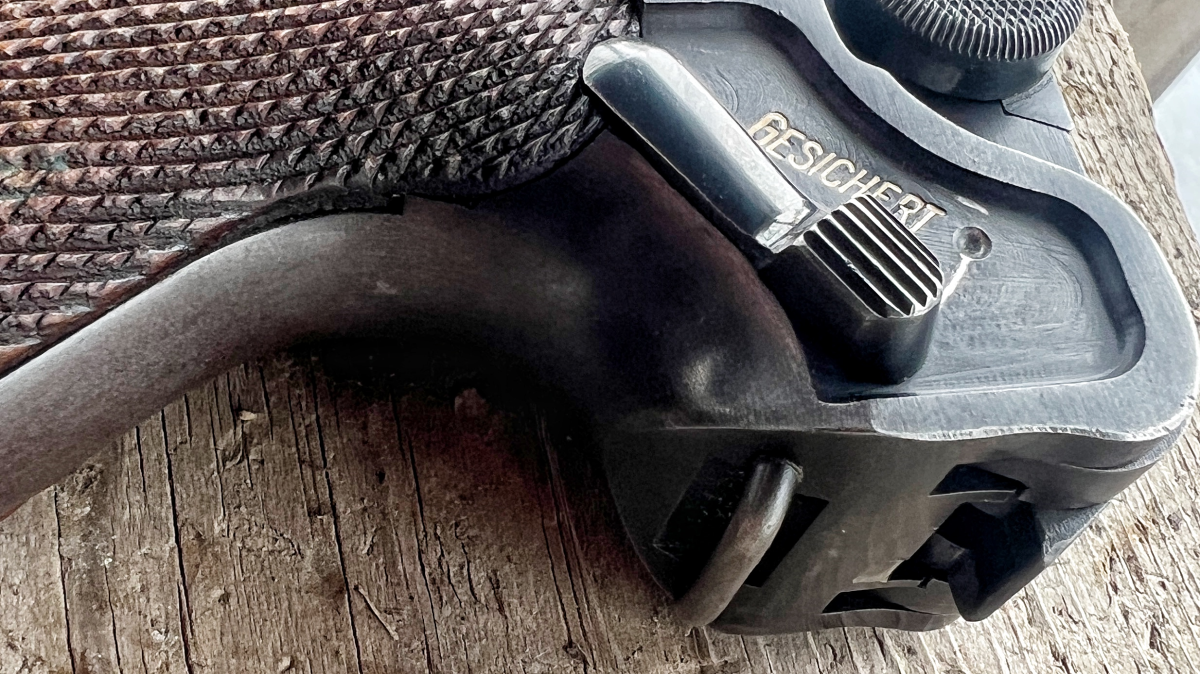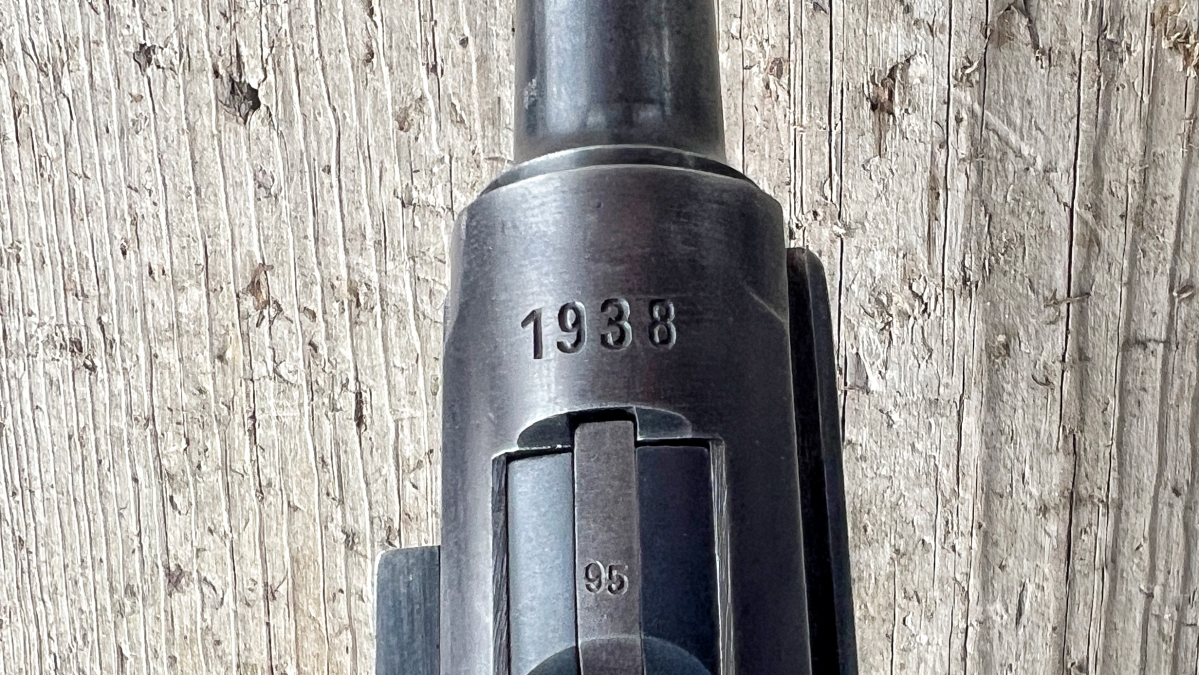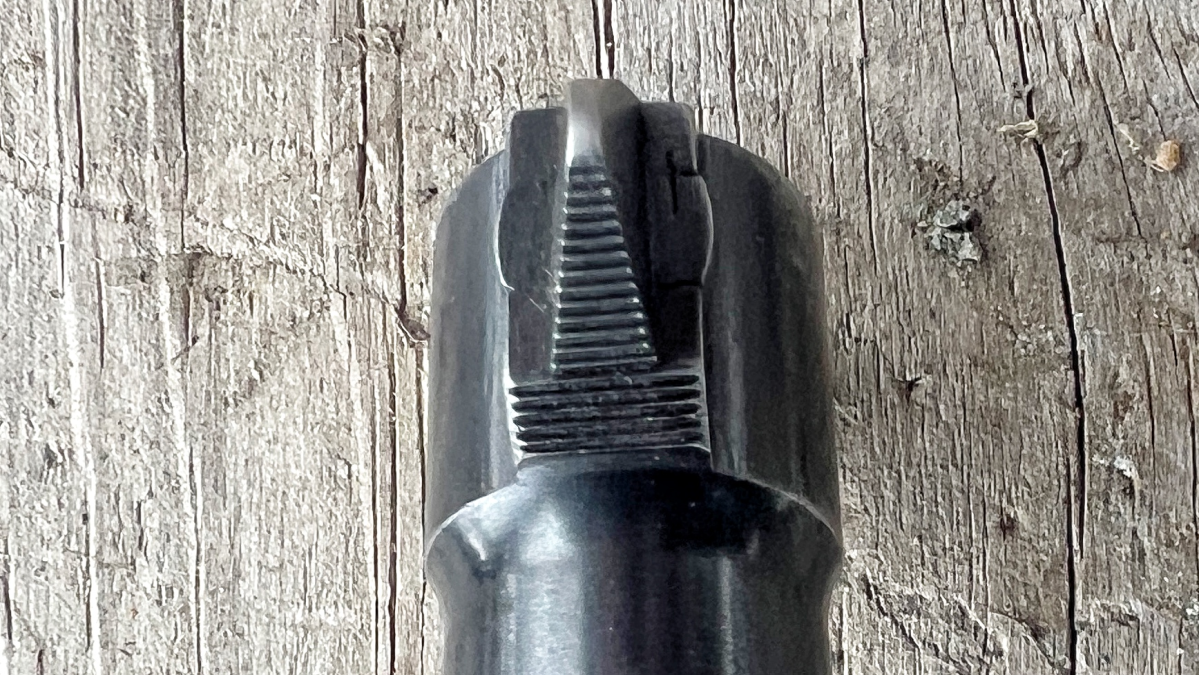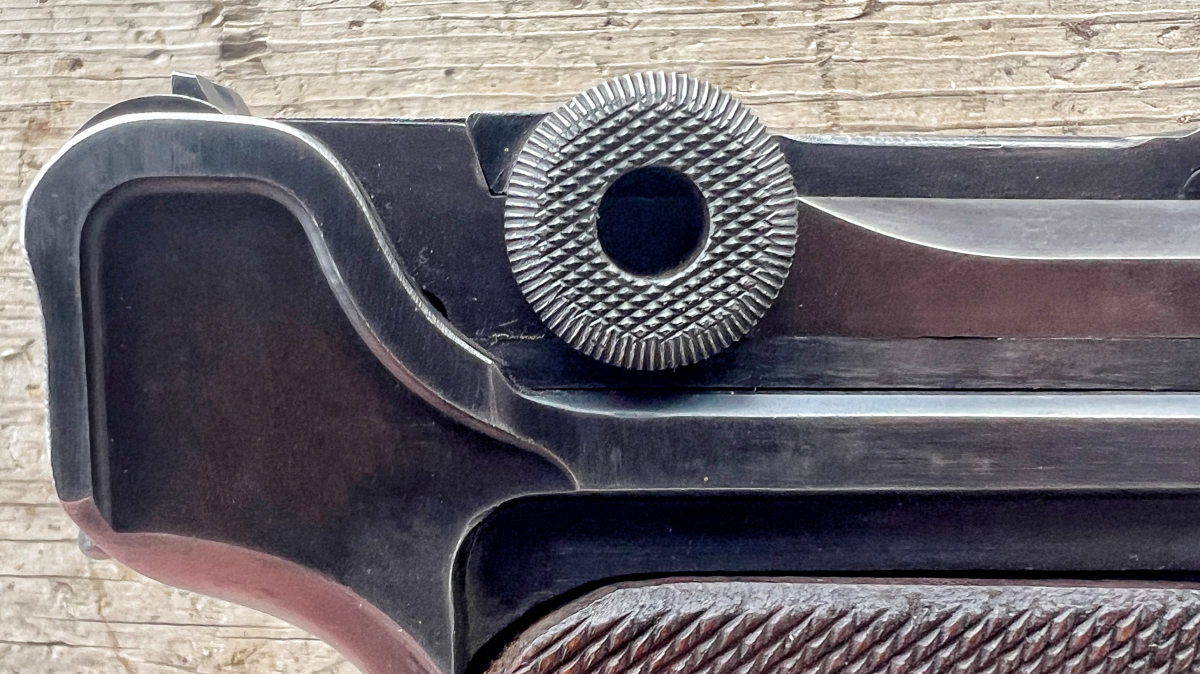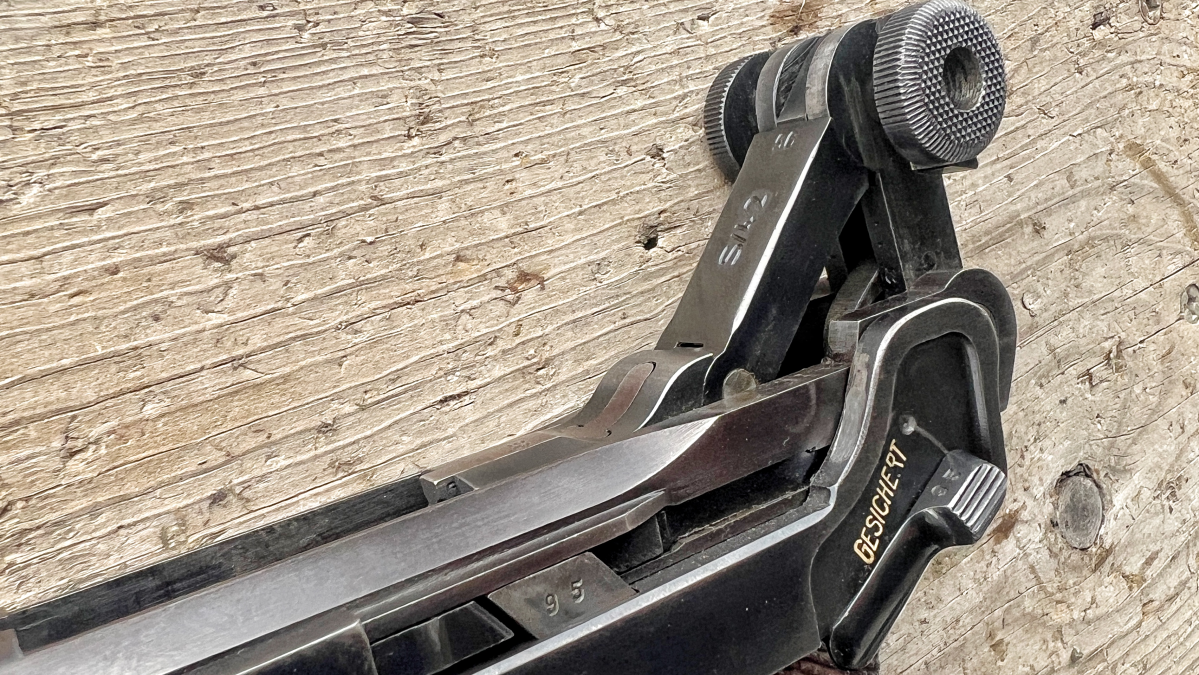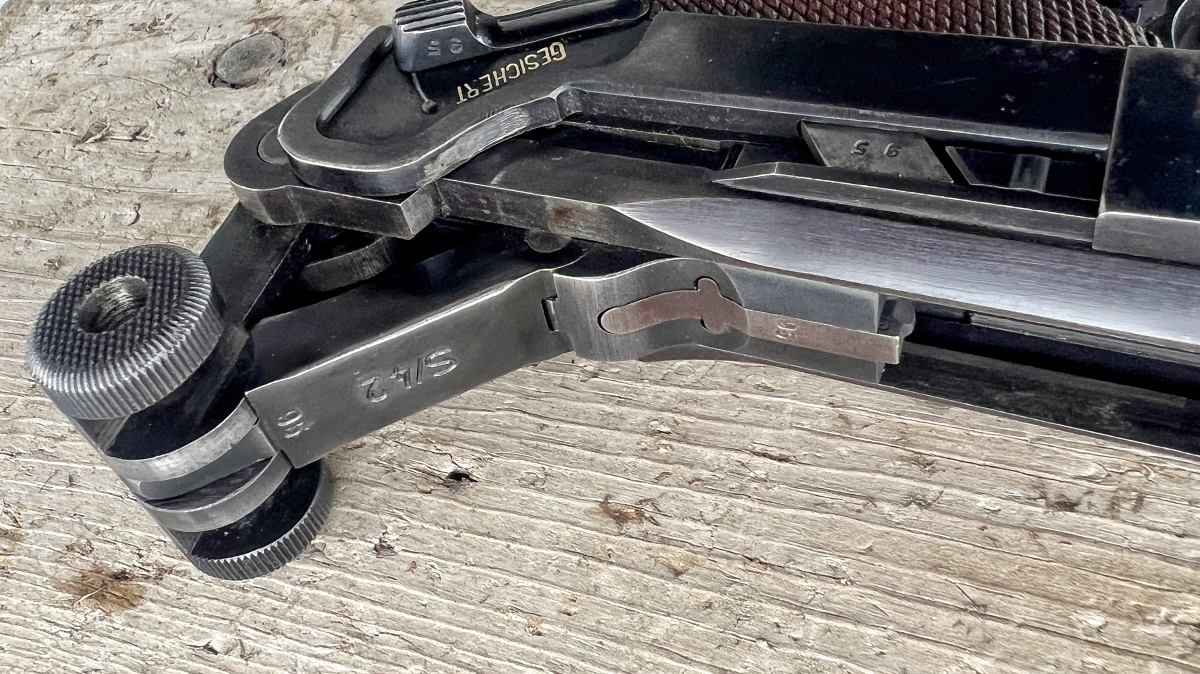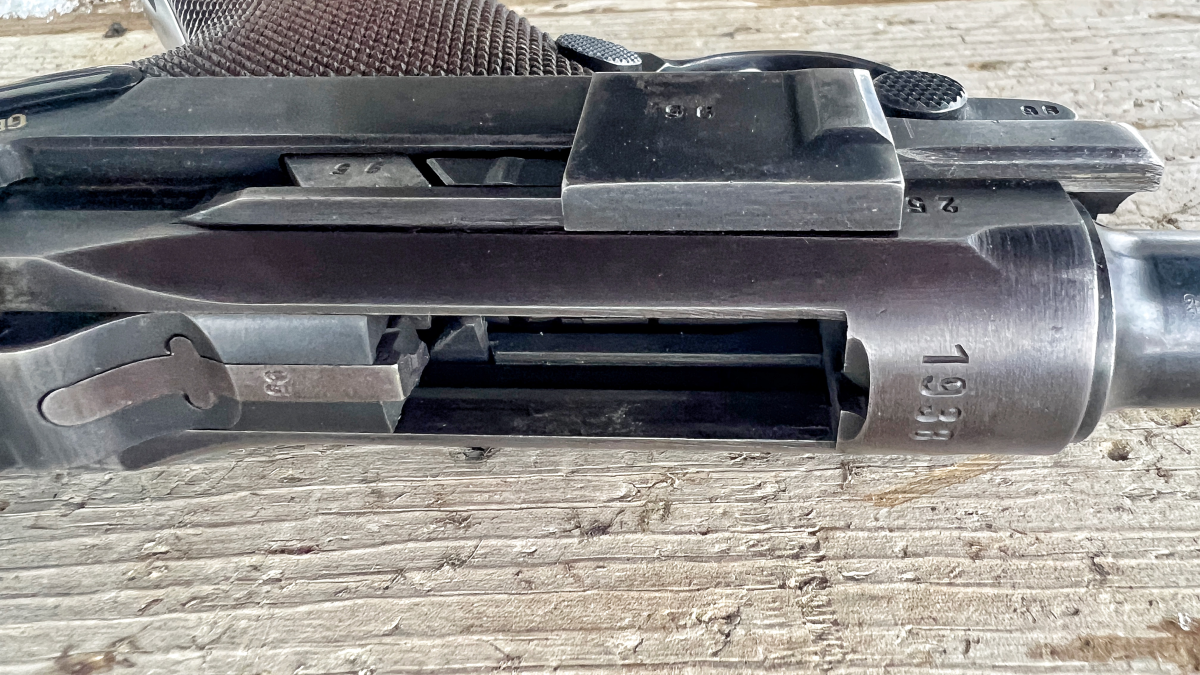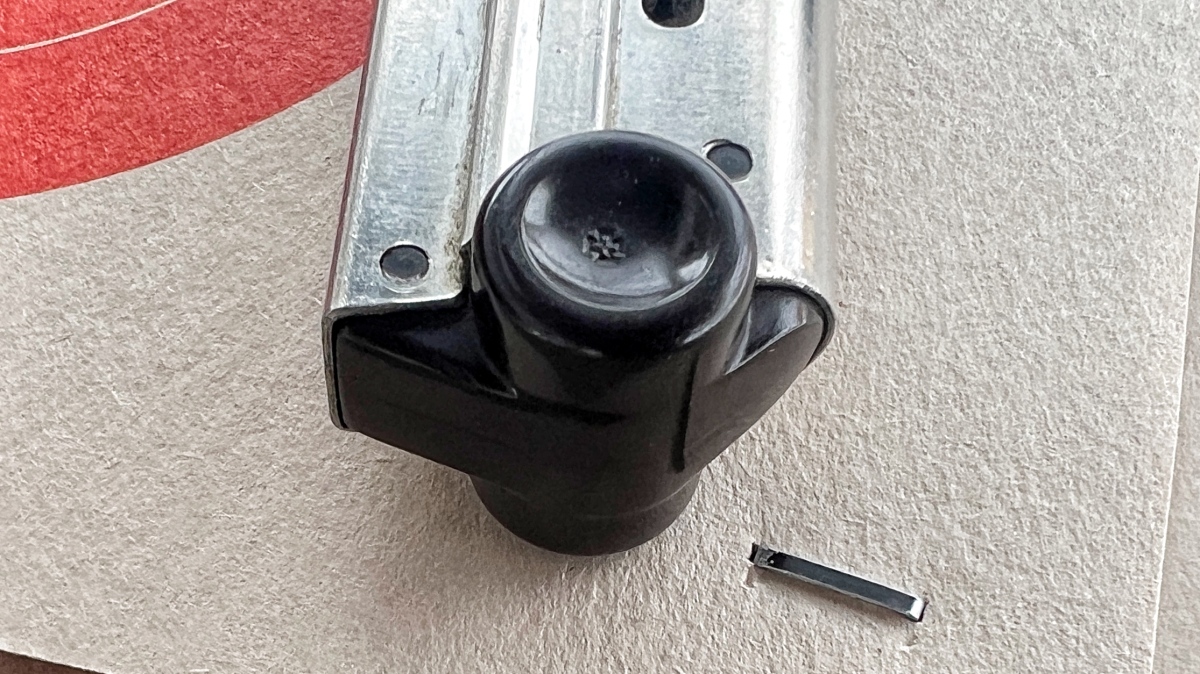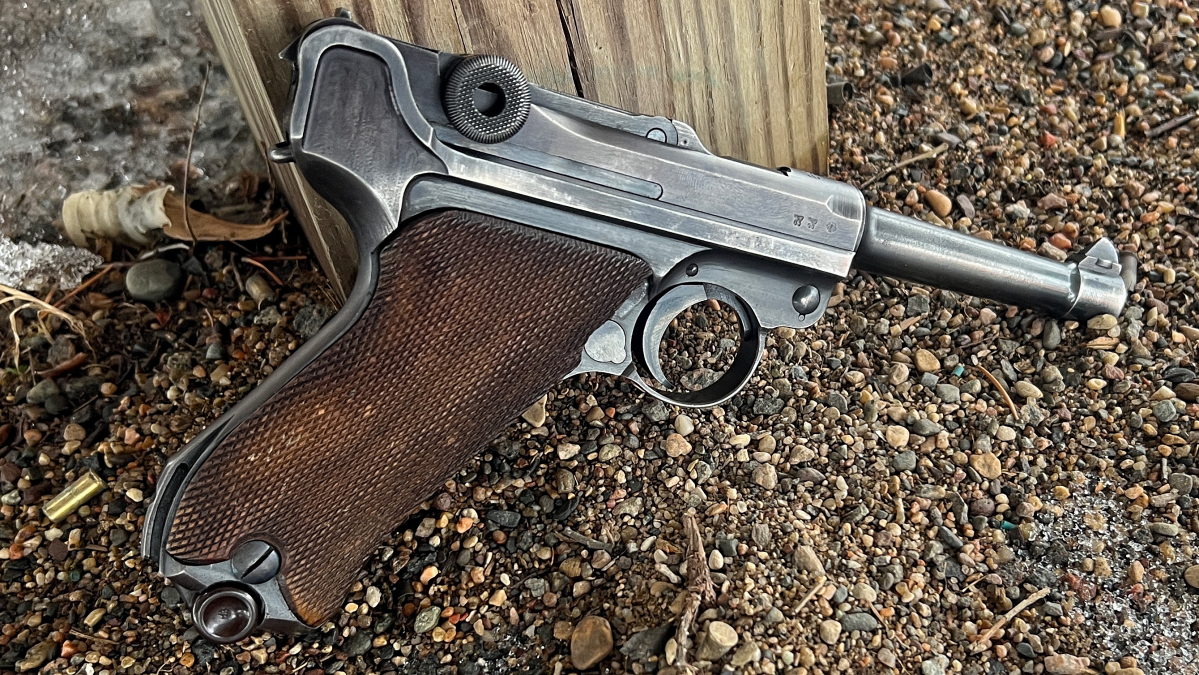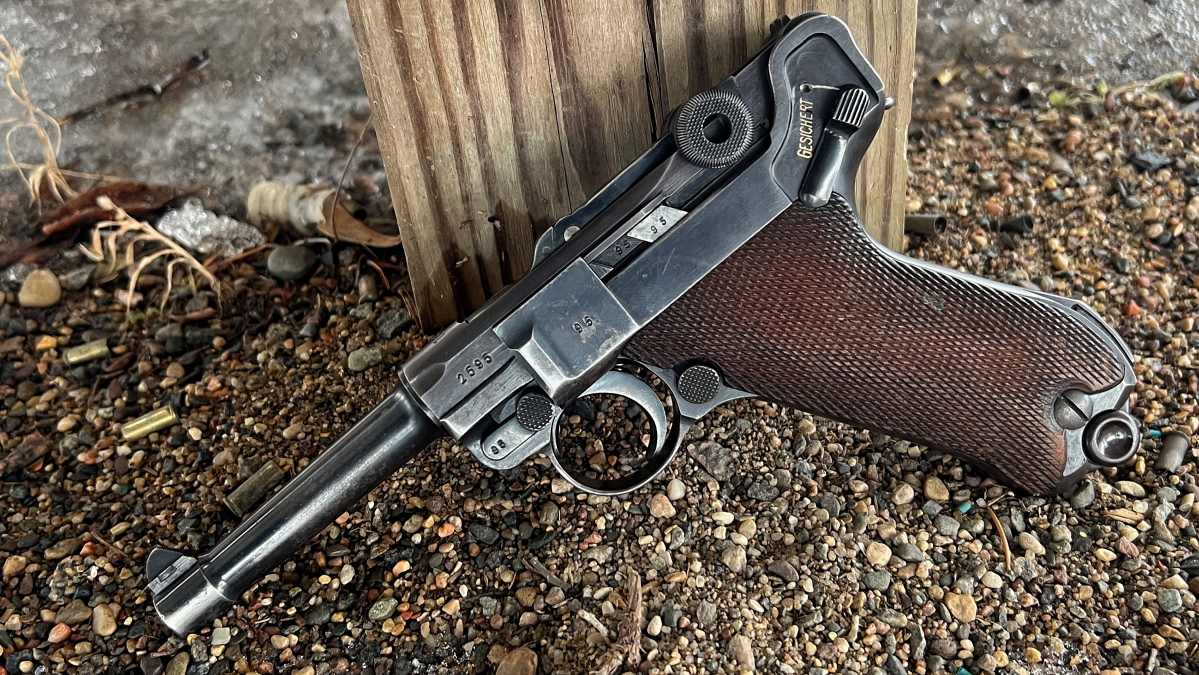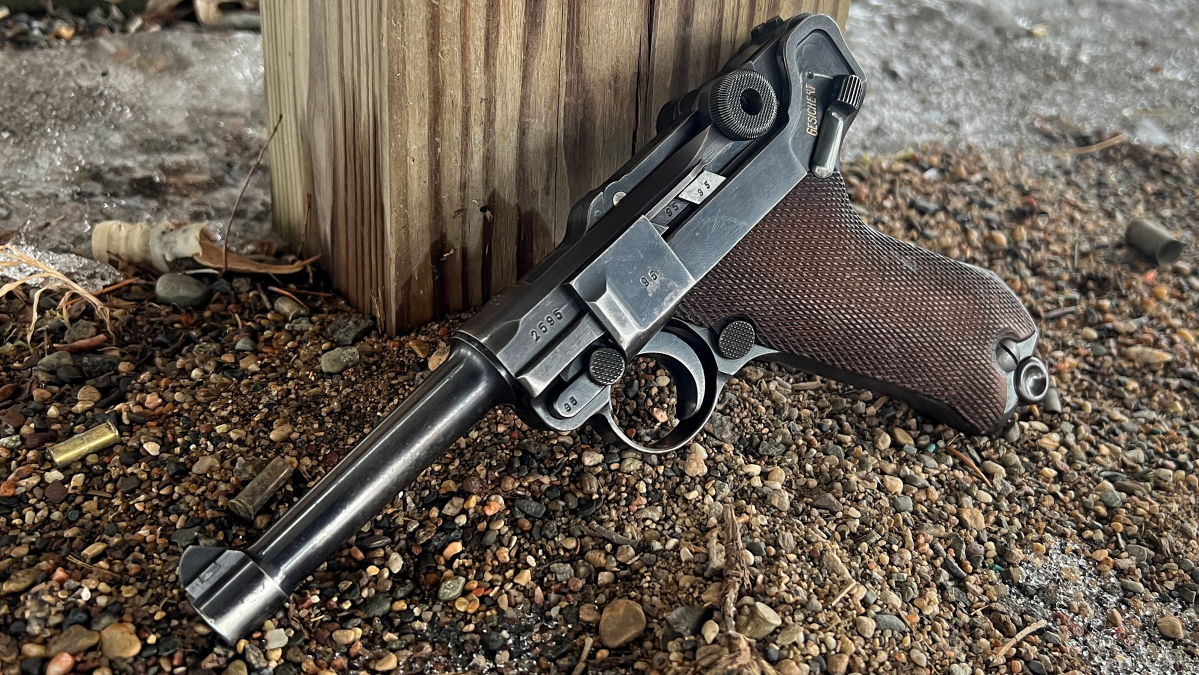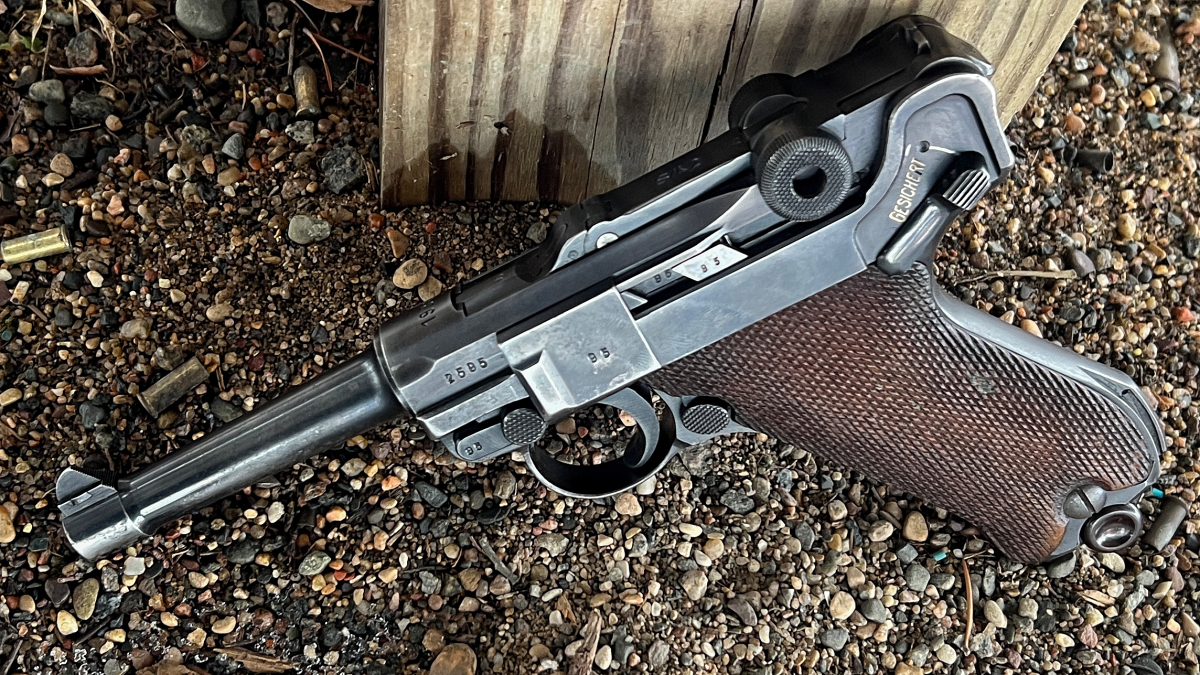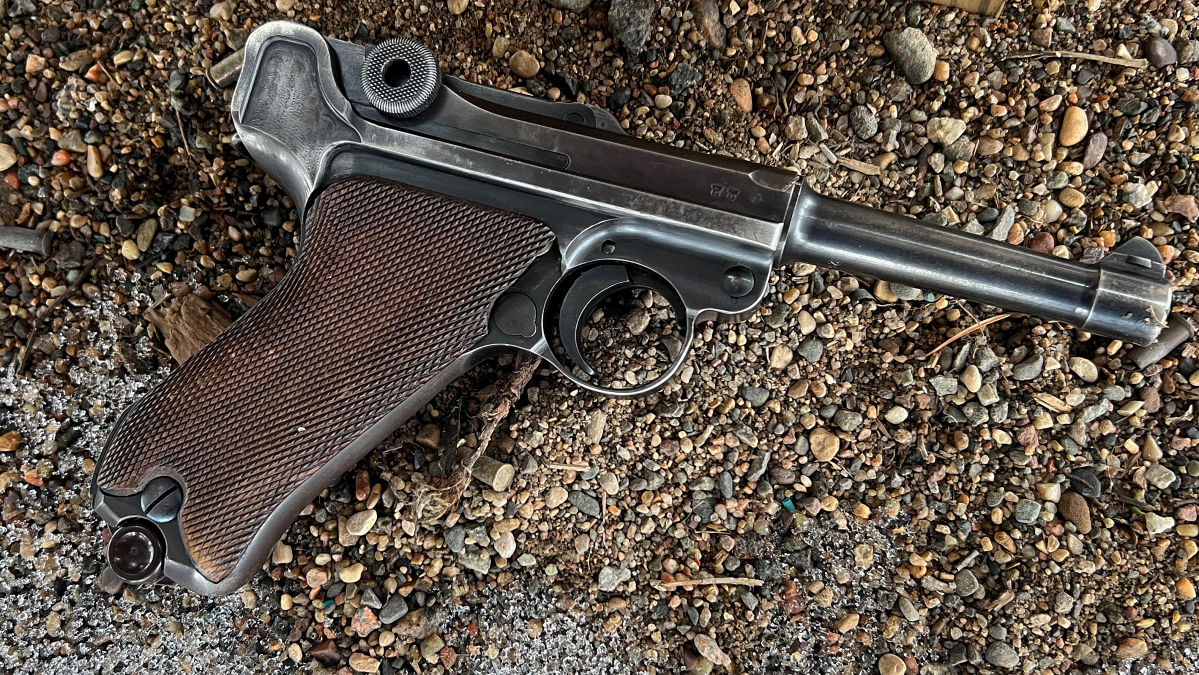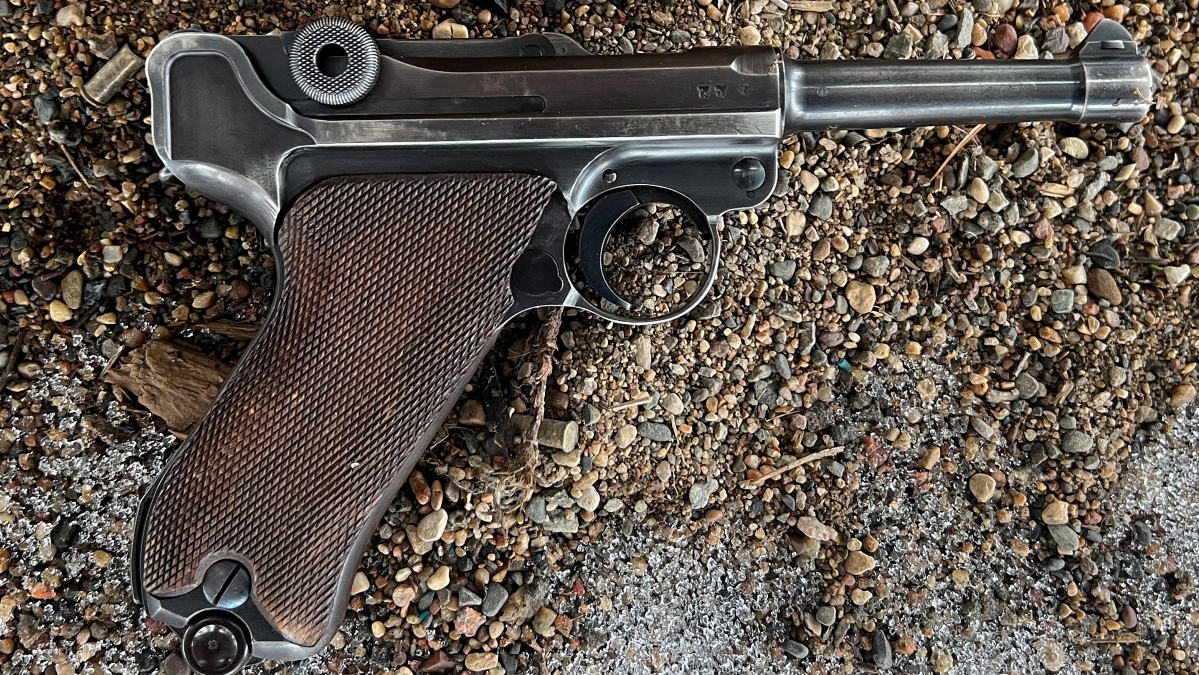Curious Relics #064: Targets & Toggles – The Luger P08 Pistol Part IV
Sam.S 05.17.23
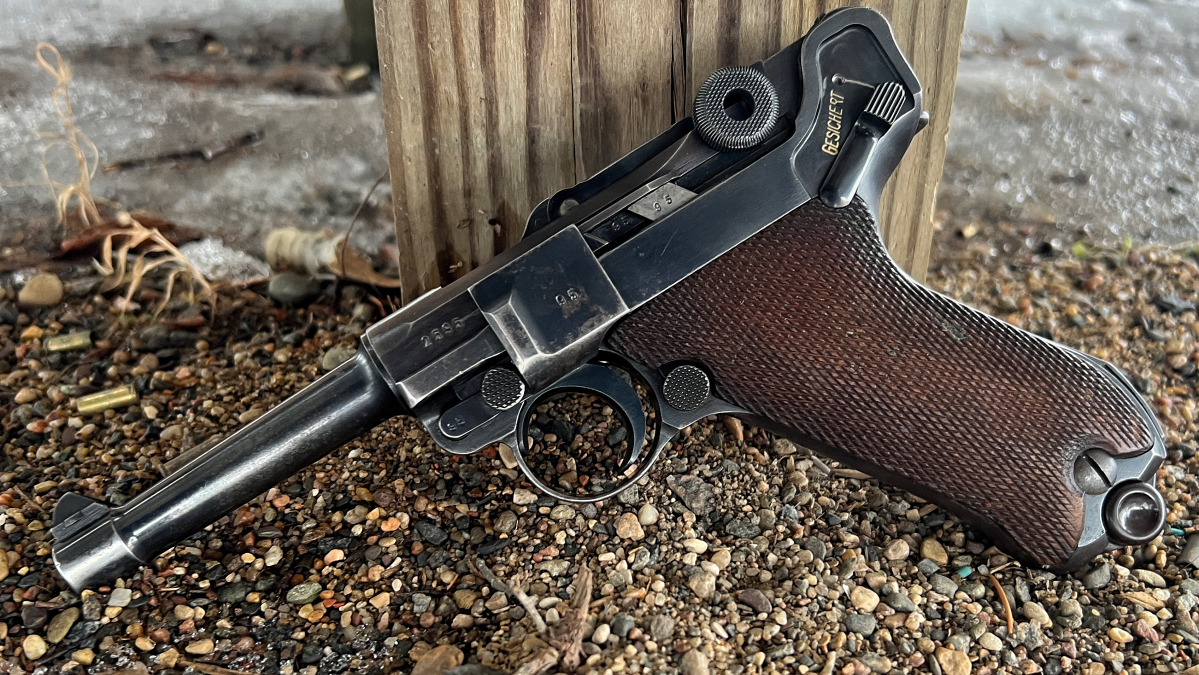
Welcome, if you are a newcomer to this fun bi-weekly segment of AllOutdoor.com! The last time around I covered the history, variations (Part II), dating, specifications, and aftermarket parts/accessories (Part III) of a German pistol that is known all around the world. In this article, we are closing out the beloved P08 with a range session. Finally, we are into the shooting business! Taking this piece of history out on a date was absolutely a bucket list thing for me. Let’s dive right into the rabbit hole once again with the Luger P08!
Other Curious Relics:
- Curious Relics #061: Another Beloved Icon – The Luger
- Curious Relics #062: Too Many Toggle Locks – The Luger Pistol Part II
- Curious Relics #063: A Documented Life – The Luger P08 Pistol Part III
- Curious Relics #018: The Everyman’s Luger – The Stoeger Luger Part I
- Curious Relics #019: The Tricky Togglelock – The Stoeger Luger Part II
Welcome to our recurring series of “Curious Relics.” Here, we want to share all of our experiences, knowledge, misadventures, and passion for older firearms that one might categorize as a Curio & Relic – any firearm that is at least 50 years old according to the ATF. Hopefully along the way you can garner a greater appreciation for older firearms like we do, and simultaneously you can teach us things as well through sharing your own expertise and thoughts in the Comments. Understanding the firearms of old, their importance, and their development which lead to many of the arms we now cherish today is incredibly fascinating and we hope you enjoy what we have to share, too!
Range Time: Luger P08
Oh man, where to start with this old gal. I think kicking it off with a feel is a good start. This version of the Luger is a very balanced gun. A majority of the mass (at rest) is in the middle if not slightly rearward which almost settles that shootist grip a little more. I am not sure of the correct term for the grip angle but it was very obviously made with one-handed shooting in mind. These days we will find it in a lot of target 22 handguns like the Ruger Mark Series (yes it rhymes but it is unrelated), S&W 22a and Victory, and even the Browning Buckmark series. It is a comfortable grip that with a straightened wrist just points well. The Luger 08 contacts my largish hands in such a way that it applies pressure to the lower part of my inner palm and the palm meat under my trigger finger knuckle. It is not uncomfortable it just feels like it is not a perfect fit for my hands.
The safety selector is somewhat easy to manipulate. Your palm needs to come off the rear of the gun in order to move it with any reliability. It is a tad bit stiff but has a positive stick and stop in its two positions.
In the “safe” position (GESICHERT showing) a parallelogram shape lifts up. This chunk blocks the sear from moving out of the way of the firing pin. One cool note on the firing pin is that the World War Two era Lugers will have a fluted firing pin to work better in moisture-rich conditions (if dunked in water). The World War One era Lugers have a non-fluted solid firing pin.
Operating the toggle is about as different as you would imagine. It is surprisingly stiff which can be unexpected to the uninitiated. That grip hidden coil spring is a tough one. When the toggle is pulled back on an empty magazine the toggle will lock open much like modern slides will on an empty magazine.
Releasing the toggle back down cannot be done without either removing the empty magazine or depressing the magazine follower which is not super easy or advisable since its deep in there and that stiff spring locking down on your finger will give you some Luger finger (if I knew how to trademark something I would trademark that) in a hurry.
Removing the magazines was also an unexpected stoppage. They are weirdly stuck. That is, they prefer to stay in unless you pull it out with those finger dishes in the floorplate. Speaking of the floorplate, they are different for different eras of Luger P08’s lifetime. Wooden floorplates will be found on “World War One” era Lugers. More so basically any made pre-1919ish had wood floorplates. In the 1920s they moved on to aluminum since the wood ones had a habit of failing. The aluminum ones were dropped in the middle of World War Two to conserve resources and they became a plastic of some sort.
Onto shooting! The sights are very welcoming and comfortable. the rear sight is a sharp but open V notch. The front sight is a windage driftable dovetailed ramp. Looking down the sights they appear as two triangles pointing in opposite directions.
The trigger is renowned the world over for its squishiness. it truly is a very squishy or spongey feeling pull and a soft cliff. It is pleasant to shoot. The recoil sends the toggle back and upward and the same applies force to your hand. Luckily the pistol carries the weight of a metal-framed gun so you sort of fall back down roughly where you began. This is not to say it is terribly comfortable. I will not say it is uncomfortable but it has a bit of that old world snap that the modern world could easily remedy if it wanted to.
As far as holes in paper the results are as you can see below. This was awhile ago but I can guess that my first two shots were the ones near the bullseye and the rest in the upper left were when I became used to the recoil. It was fun to shoot and I assure you it took some self-control not to shoot faster.
Final Thoughts: Luger P08
I am sad this one has come to an end. That being said, perhaps we can touch on the Luger once again in the form of a more magnified setting. Something like a World War One era Luger specifically…like the one I just picked up recently. It has quite an interesting story. Until then I bid you thanks for sticking with us and a heartfelt thank you to Steve! See you folks next time!
I want to say a heartfelt thank you and a big shoutout to my friend Steve Murphy for loaning me his Luger. It was a wonderful piece to work with and an absolute beauty that cannot be fully captured in pictures. This article would not have happened as soon as it did without you, Steve! Thank you.
In closing, I hope our Curious Relics segment informed as well as entertained. This all was written in hopes of continued firearm appreciation and preservation. We did not just realize how guns were supposed to look and function. It was a long and tedious process that has shaped the world we live in. So, I put it to you! Is there a firearm out there that you feel does not get much notoriety? What should our next Curious Relics topic cover? As always, let us know all of your thoughts in the Comments below! We always appreciate your feedback.
